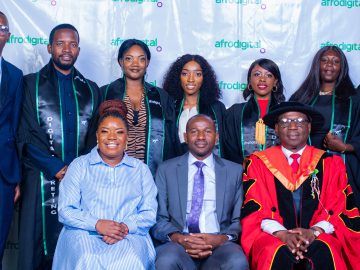What started with a few viral videos and blog posts two decades ago has evolved into a sprawling multibillion-dollar industry. The creator economy — which consists of YouTubers, TikTokers, Instagram stars, livestreamers, podcasters and more — is not only transforming culture and entertainment, it’s upending commerce, education and even the political landscape.
As the internet plays a bigger role in all of our lives, content creators have amassed tremendous power. More than 70 percent of Americans between the ages of 18 and 29 follow influencers on social media, according to a 2022 Pew Research poll. In February, YouTube surpassed Netflix as the biggest streaming platform, and watch time for some of the biggest creators on the platform has only grown. According to a recent Goldman Sachs report, the content creator industry could surpass half a trillion dollars by 2027.
But to succeed online in 2024, you can’t count on any one platform. “We’re living through our diversification era,” says Dan Weinstein, co-founder of Underscore Talent, a management firm that represents top creators including Noah Beck, Jordan Matter, CelinaSpookyBoo and Alan Chikin Chow. “Diversification of platforms, diversification of revenue streams. It’s not enough to be single-platform dependent or single-revenue-stream dependent anymore.”
The idea that an influencer can blow up on an app, sign a few big brand deals and relax by the pool at their Beverly Hills mansion is a fantasy. Popular creators say that the industry is more competitive than ever. “Creating content in 2024 is the most difficult and challenging year to go about it,” says Josh Helfgott, a TikTok star with more than 5.5 million followers, “because everything is becoming really fragmented and really niche, while algorithms are more brutal and competitive than before.”
For those who do succeed, the payoff can be huge. After her multipart tell-all series about a former relationship went viral on TikTok this spring, Tareasa “Reesa Teesa” Johnson amassed 3.6 million followers on the app and began inking partnerships with major brands including Target, Marriott, Adidas and Microsoft. Now, writer and actor Natasha Rothwell is developing the series into a potential television show. Other creators like MrBeast, David Dobrik, Logan Paul, The Nelk Boys and Emma Chamberlain have leveraged their online fame to launch suites of consumer products and brands, earning them millions.
“The creator space now is really the jumping-off point for new products, IP or franchises,” says Coco Mocoe, a 28-year-old content creator and trend strategist with more than 1.1 million followers on TikTok.
While a decade ago many creators sought to enter into traditional Hollywood, now most are perfectly fine being internet-first entertainers, especially as the barrier to content creation gets lower. “I think it is an incredible time to be a creator,” says Chris Williams, founder and CEO of Pocket.watch, a studio that helps young people launch careers as YouTube stars. “The onset of AI will empower so many opportunities for those with the desire and skill.”
Evan Britton, CEO and founder of Famous Birthdays, a website that catalogs biographical information on stars, especially those popular with Gen Z, says that the creator economy “is where the growth is and the excitement and passion is from fans.
“The majority of new profiles added to Famous Birthdays are TikTok stars, Instagram stars and YouTubers,” he says. “That’s where demand is for the community” — not with old-school media figures and entertainers.
Being famous online, however, comes with a long list of challenges that traditional entertainers never had to deal with. Fans expect unlimited access and responsiveness to their whims and belief systems. Many creators develop mental health issues from the emotional labor of tending to their fandoms. Content creators’ careers, because they’re tied to online metrics and the fickle whims of the internet, are volatile. Ninety percent of creators struggle with burnout and more than 70 percent have considered quitting, according to a recent study.
Creators of color also face unique challenges. They receive fewer brand partnership opportunities, are less likely to receive gifted products and are often paid less than their white counterparts. Creators with a “deep dark” skin tone earn about 45 percent less than influencers with light skin tones, according to a recent report by talent management firm SevenSix Agency.
Most creators work without labor protections or the safety net that comes with being employed in more traditional industries. The industry is almost completely unregulated; fraud and scams are rampant, and creators who are just starting out must act as their own producers, editors, bookers, directors, set designers and more, all while managing their finances, distributing and promoting their own content, and navigating their public reputation.
Adam Goodman, the CEO and founder of Invisible Narratives, which helps creators professionalize and expand their businesses, says that as the creator world subsumes the entertainment landscape, there’s an opportunity to build infrastructure around this new generation of media businesses. “Even though they’re making lots of money, there are no producers for the creator economy. There are day-to-day people that can help you organize a shoot … but it’s very transactional,” he says.
Goodman hopes that traditional Hollywood leaders will begin paying more attention to opportunities arising from the new generation of internet-native talent.
“Hollywood has gotten very comfortable at being able to make decisions based on something that they can justify to the greenlight committee,” he says. “But you also have to take new bets and try new things … and you can’t ignore what your kids are doing and looking at.”
This story appeared in the Oct. 9 issue of The Hollywood Reporter magazine. Click here to subscribe.





